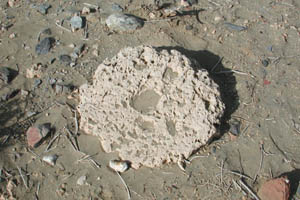|
On the Sudanese Red Sea coast, close to
the border with Eritrea and inland of the modern town of Aqiq, is the
hamlet of Adobana where the remains of the classical harbour of Ptolemais
Epitheron can be seen:
|
|
Most of the ashlars, cut from fossilized coral,
were re-used in later structures. In Ptolemaic
times (about 300-200 BCE) this was where African elephants, meant for
the Ptolemaic army, where shipped to Berenike: |
|
|
|

|
|

|
|
|
|
|
|
|
|
Objective of visit:
|
|
To examine the condition
of the site, where a modern harbour is now planned, and assess the
necessity and possibilities of archaeological research in the region. |
|
Date of visit:
|
|
January 2006
|
|
Fellow visitors:
|
|
A small team of scholars
affiliated with the McDonald Institute for Archaeological Research in
Cambridge and the Faculty of Archaeology of the University of Khartoum,
directed
by Laurence Smith PhD. The site was last comprehensively described by
J.W.
Crowfoot in The Geographical Journal of May 1911 (number 37,5;
pp.
523-550). |
| Results: |
|
After we finally reached
the site it was obvious that there is no immediate threat to the
ancient remains. Archaeological investigation of the region, however,
is recommanded to take place as soon as possible. |
| Approximate position and date of the site: |
|
A combination of tectonic
movement, the rise of the sea level and the erosion of the Red Sea
Hills resulted in Ptolemais Epitheron (18°N 10' 43" /
38°E 15' 53") now being some distance inland from the Red Sea
coast. The town was probably not in use for a long time, after being
founded around 275 BCE, as the elephant hunters
were too effective and had to relocate further south. Soon after that
African elephants did prove useless in warfare
and the project was abandoned. |
| Short description of the site: |
|
Ptolemais Epitheron
was founded by Ptolemy II around 275 BCE to serve as a source for
elephants needed for his war with the Seleucids who had cut off the
supply route of Indian elephants. The locally caught African elephants were transported
to Berenike, in
southern Egypt, on special ships, called elephantagoi, and walked through the
desert to training
stations in the Nile Valley.
The
project and the southern harbours, including Ptolemais Epitheron,
were abandoned when African elephants appeared useless in warfare.
Berenike and the desert routes, however, kept being used for a long
time serving the long distance trade with Arabia and India. The short
period of occupation, combined with the fact that the building
materials were re-used for later structures (mostly graves), make that
little is left of Ptolemais Epitheron. Remains of structures
of unknown date, including standing stones and many graves, can be
found
in its vicinity. |
| Additional remarks: |
|
My work in Sudan would
not have been possible without the support of the Fayum Project and the Cotsen Institute of Archaeology
at UCLA.
|
 |
|
|
| HOME |
|
|

